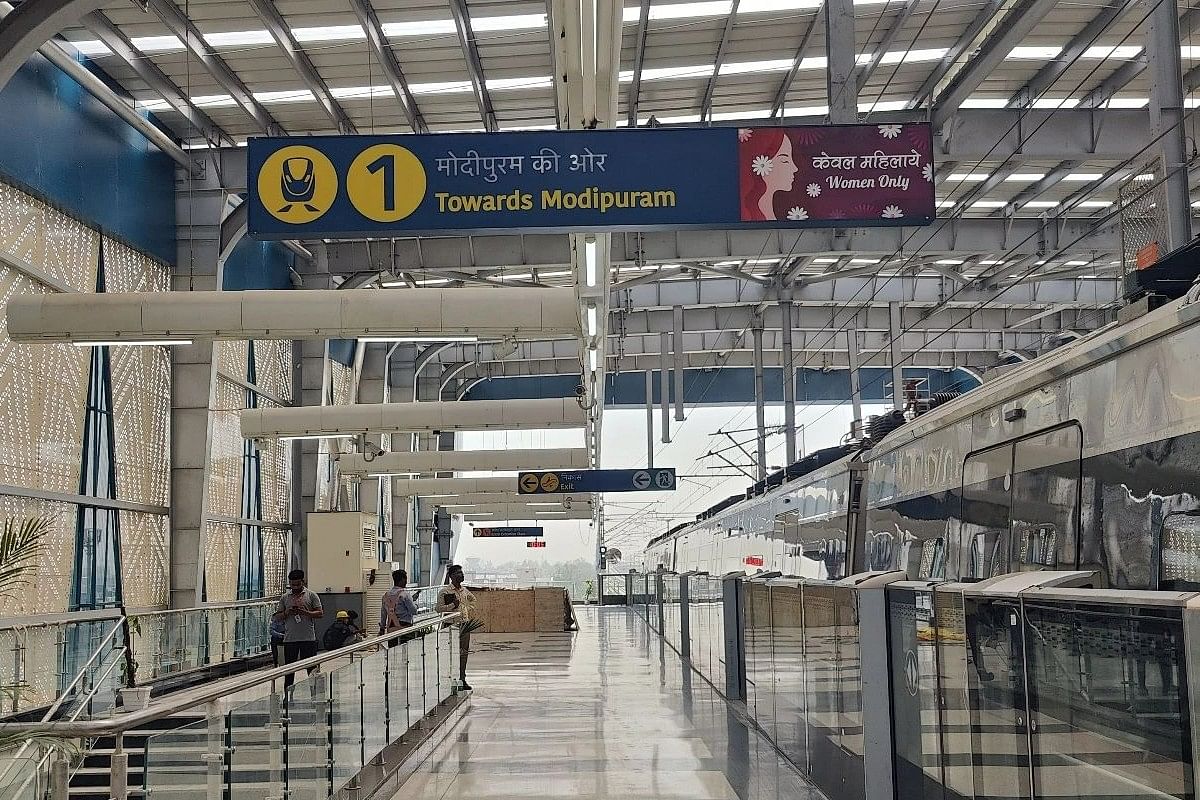The high-speed corridor promises to reduce travel time, ease congestion, and boost regional development across Delhi-NCR
New Delhi, June 1, 2025 — The Delhi–Meerut Regional Rapid Transit System (RRTS), India’s first-of-its-kind high-speed regional rail project, is moving rapidly toward full completion, with over 80% of the corridor already built and several key segments operational. Developed by the National Capital Region Transport Corporation (NCRTC), the RRTS is poised to redefine daily commuting and regional connectivity in North India.
Once fully operational, the 82-kilometer corridor will enable commuters to travel from Sarai Kale Khan in Delhi to Modipuram in Meerut in less than 60 minutes, cutting travel time by nearly 70%. The project is part of India’s vision for sustainable, fast, and modern transport infrastructure, aimed at decongesting roads and reducing carbon emissions.
What Is the Delhi–Meerut RRTS?
The RRTS is a fast-track rail system developed to enable quick and efficient travel between cities. It differs from traditional metro systems by offering faster speeds (up to 160 km/h), fewer stops, and broader coverage between urban centers.
The Delhi–Meerut corridor is the flagship route under Phase 1 of the NCR RRTS master plan, which also includes planned corridors to Alwar and Panipat in future phases.
Current Status: Stretch by Stretch
1. Operational Priority Corridor: Sahibabad to Duhai Depot
The first 17-km priority section between Sahibabad and Duhai Depot in Uttar Pradesh has been operational since October 2023. Branded as RAPIDX, the trains on this stretch have received high praise for their comfort, speed, and punctuality.
2. Duhai to Meerut City – Near Completion
Construction between Duhai and Meerut is advancing rapidly, with significant progress being made on key segments. This stretch includes several elevated and underground stations, including key stops at Modinagar, Muradnagar, and Partapur.
3. Delhi Stretch (Sarai Kale Khan to Ghaziabad) – Final Phase Underway
The Delhi segment is currently in its final construction phase, with tunneling, track laying, and station building well underway. Completion is expected by early 2026, with testing projected to begin by late 2025.
Key Features of the Delhi–Meerut RRTS
- Speed & Frequency: Operating speeds of up to 160 km/h with trains available every 5–10 minutes during peak hours.
- Smart Stations: All stations will feature AI-based security, digital ticketing, platform screen doors, and multimodal connectivity.
- Green Technology: The corridor is powered by solar energy, with energy-efficient stations and regenerative braking systems.
- Women-Centric Design: Reserved coaches for women and gender-sensitive station designs ensure safety and inclusivity.
- Accessibility: Ramps, lifts, tactile flooring, and multilingual signages for persons with disabilities and elderly commuters.
Economic and Social Impact
The Delhi–Meerut RRTS is not just a transportation project; it’s a game-changer for regional development. With a significant cut in travel time, the project is anticipated to:
- Boost real estate development along the corridor
- Create thousands of jobs during and after construction
- Reduce vehicular traffic, easing congestion in Delhi-NCR
- Improve air quality by cutting down on private vehicle usage
Urban planners predict that towns like Ghaziabad, Modinagar, and Meerut will see rapid economic growth, transforming them into satellite hubs that relieve pressure from Delhi’s core.
Challenges and Future Outlook
Despite its rapid progress, the RRTS has faced several challenges, including land acquisition hurdles, COVID-19-related delays, and logistical issues in densely populated urban zones. However, NCRTC’s strong project management and inter-agency coordination have helped it stay largely on track.
The entire Delhi–Meerut corridor is expected to be fully operational by mid-2026, with phased trial runs beginning in early 2025 across remaining segments.
Once complete, the project will serve over 800,000 passengers daily, marking a major leap in public transport standards in India.
Conclusion
The Delhi–Meerut RRTS is poised to transform transportation throughout the National Capital Region. With its blend of speed, efficiency, and sustainability, it serves as a blueprint for future regional transit systems across the country.
As the corridor nears full operation, commuters, businesses, and urban planners alike eagerly await the benefits of this transformative infrastructure.





